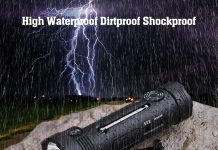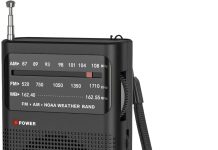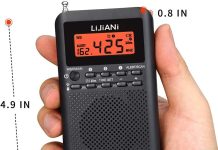Step into the world of weather radio channels, where the difference between VHF and UHF holds the key to seamless communication. When it comes to tuning in to the latest weather updates, understanding the nuances between VHF and UHF frequencies is crucial. While both offer reliable reception, each channel has its own unique qualities that set it apart. In just a few moments, we will unravel the mysteries behind VHF and UHF weather radio channels and equip you with the knowledge you need to make informed decisions when it comes to staying informed about Mother Nature’s whims. Get ready to explore the world of radio frequencies and discover which channel suits your weather needs.
Review contents
Frequency Range
VHF
VHF (Very High Frequency) weather radio channels operate in the frequency range of 30 to 300 MHz. These channels are commonly used for outdoor activities such as hiking, camping, boating, and emergency communications. VHF frequencies are well-suited for communication over relatively short distances, making them ideal for local and regional weather updates. They provide good coverage in open areas with minimal interference.
UHF
UHF (Ultra High Frequency) weather radio channels, on the other hand, operate in the frequency range of 300 to 3000 MHz. These channels are typically used for indoor communication and for areas with obstructions such as buildings, trees, and hills. The higher frequency range allows UHF channels to penetrate obstacles better than VHF channels. This makes UHF frequencies suitable for urban environments and areas with dense vegetation or rugged terrain.
Propagation
VHF
VHF radio waves travel in a straight line and have limited reflection and refraction capabilities. They are best suited for line-of-sight communication, which means that radio signals at VHF frequencies can only effectively reach areas that are within direct sight. If there are obstacles between the transmitting and receiving antennas, the signal quality can be significantly degraded.
UHF
UHF radio waves, on the other hand, have shorter wavelengths and can better navigate obstacles. They have a higher tendency to diffract and bend around objects, allowing for a more reliable signal in areas with obstructions. This makes UHF frequencies ideal for situations where a direct line of sight between the transmitter and receiver may not be possible.
Line of Sight
VHF
In terms of line of sight communication, VHF weather radio channels rely heavily on having an unobstructed view between the transmitting and receiving antennas. As mentioned earlier, VHF signals are subject to degradation when encountering obstacles such as buildings, trees, and hills. However, in open areas with a clear line of sight, VHF frequencies can provide excellent coverage with minimal interference.
UHF
UHF weather radio channels have a greater ability to penetrate and bend around obstacles. This means that they can provide communication over longer distances in environments where direct line of sight is blocked. UHF frequencies are particularly advantageous in urban settings where tall buildings can impede signal propagation. They allow for reliable communication even in densely populated areas.
Obstacles
VHF
VHF frequencies can be significantly impacted by obstacles such as tall buildings, mountains, and dense vegetation. These obstacles can block or weaken the signal, leading to reduced coverage and decreased signal strength. In areas with abundant natural and man-made obstructions, VHF weather radio channels may struggle to provide reliable communication.
UHF
UHF frequencies, being higher in range, are better able to penetrate obstacles than VHF frequencies. This makes them more suitable for use in urban areas or places with dense vegetation. UHF weather radio channels can overcome the challenges posed by obstacles and deliver clear communication even in the presence of obstructions.
Signal Strength
VHF
VHF weather radio channels have a longer wavelength compared to UHF, which allows them to travel greater distances with less attenuation. However, their signal strength can be significantly affected by interference caused by physical obstacles or other electronic devices. In areas with a clear line of sight and minimal interference, VHF frequencies can provide reliable signal strength.
UHF
UHF weather radio channels have a shorter wavelength, resulting in smaller coverage areas compared to VHF. However, they have a higher signal strength due to their ability to penetrate obstacles. UHF frequencies can maintain a strong signal even in environments with significant obstructions or interference. This makes UHF weather radios well-suited for use in both urban and rural settings.
Interference
VHF
VHF weather radio channels may experience interference from other electronic devices operating in the same frequency range, such as televisions, FM radios, and other VHF radios. Additionally, physical obstacles can cause multi-path interference, where signals bounce off structures and arrive at the receiver with varying time delays, causing distortion. This interference can affect the clarity and reliability of VHF communication.
UHF
UHF weather radio channels are less susceptible to interference from devices operating in the VHF range, as UHF and VHF signals do not easily mix. However, UHF frequencies can still experience interference from other UHF devices or nearby transmitters. It is important to note that while UHF channels can overcome many obstacles, they may still encounter interference in certain environments.
Channel Availability
VHF
VHF weather radio channels have been widely used for decades and offer a large number of available channels. This provides users with a variety of options when it comes to selecting a specific frequency for their weather radio. The abundance of VHF channels allows for better customization and reduces the likelihood of overcrowding on a single frequency.
UHF
UHF weather radio channels also offer a good number of available frequencies, although they may not be as numerous as VHF channels. However, UHF frequencies are less commonly used for weather radios compared to VHF. This means that UHF channels are less likely to experience overcrowding or interference from other users.
Weather Radio Use
VHF
VHF weather radio channels are commonly used for outdoor activities such as camping, hiking, boating, and other recreational pursuits. They provide reliable weather updates and emergency notifications in areas with minimal obstructions and a clear line of sight. VHF weather radios are often portable and compact, making them convenient for use while on the move.
UHF
UHF weather radio channels are particularly useful in urban environments, where obstacles such as tall buildings can hinder VHF signal propagation. UHF frequencies are well-suited for indoor communication and provide clear weather updates even in areas with significant obstructions. UHF weather radios are a reliable choice for those residing or working in densely populated areas.
Radio Communication Systems
VHF
VHF radio communication systems are widely used in various industries, including public safety, aviation, marine, and emergency services. These systems operate on VHF frequencies, enabling reliable communication over large areas with minimal interference. VHF radios are favored by users who require long-range communication and good coverage in open areas.
UHF
UHF radio communication systems are commonly used in industries where communication needs to penetrate obstacles and reach areas with limited line of sight. Examples include construction, manufacturing, and security. UHF frequencies are versatile and provide reliable communication in urban settings or areas with significant obstructions. UHF radios are often the chosen solution for users who require communication in challenging environments.
Conclusion
The choice between VHF and UHF weather radio channels depends on various factors such as the environment, specific communication needs, and potential obstacles. VHF frequencies are well-suited for open areas with a clear line of sight, making them popular for outdoor activities and regional communication. On the other hand, UHF frequencies excel in urban environments and areas with significant obstacles, providing reliable communication even in densely populated or obstructed areas. Ultimately, understanding the differences between VHF and UHF weather radio channels allows users to make an informed decision based on their unique requirements.



























